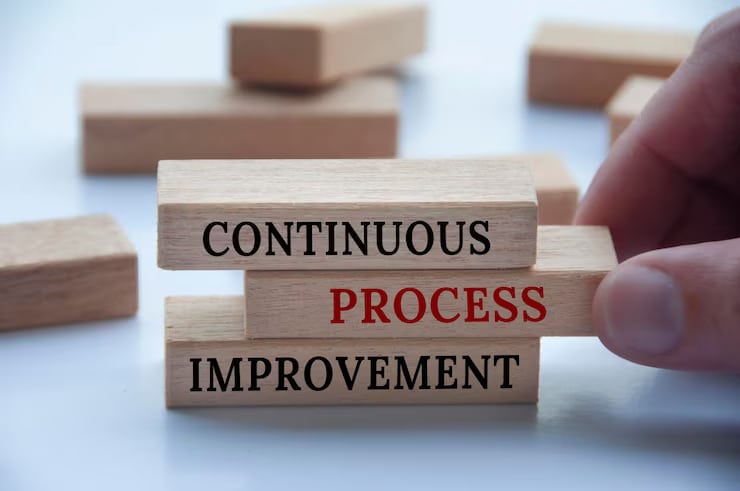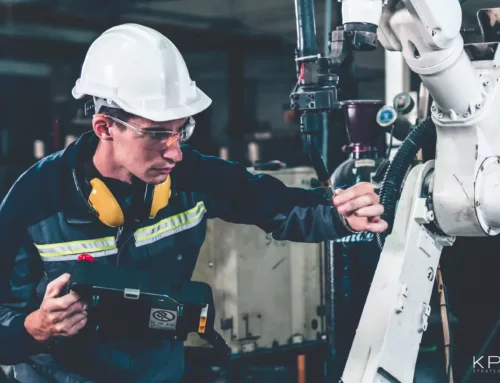This article explores various continuous improvement methodologies that organizations can adopt to enhance efficiency and drive operational excellence. It covers key tools such as Kaizen, PDCA (Plan-Do-Check-Act), and Lean principles, explaining how each tool contributes to a culture of continuous improvement. KPI Fire’s Continuous Improvement Software is highlighted as a vital solution that integrates these methodologies, providing actionable insights to help companies streamline their processes, drive program execution, and achieve measurable cost savings.
Introduction to Continuous Improvement
The historical roots of business improvement can be traced back to the late 19th century with scientific management and the work of pioneers like Taylor and the Gilbreths. In the mid-20th century, Total Quality Management (TQM) emerged, emphasizing a comprehensive approach to quality improvement. The success of Japanese manufacturing practices in the late 20th century, driven by techniques like JIT and TPM, further popularized the idea of continuous improvement.
Modern methodologies like Lean Manufacturing, Six Sigma, and Agile Development have significantly shaped the field of continuous improvement. Lean focuses on eliminating waste, Six Sigma on reducing defects, and Agile on iterative development. These methodologies, along with others like Kaizen and TQM, have contributed to the widespread adoption of continuous improvement across various industries.
What Is Continuous Improvement?
Continuous improvement is a management philosophy that emphasizes the ongoing pursuit of excellence in all aspects of an organization’s operations. It involves a systematic approach to identifying and eliminating waste, improving efficiency, and enhancing quality. This philosophy is rooted in the belief that there is always room for improvement, no matter how successful an organization may be.
Types of Continuous Improvement Methodologies
Continuous improvement encompasses a wide range of methodologies and techniques aimed at enhancing organizational performance. Here are some of the most common types:
1. Lean
Lean a continuous improvement methodology that focuses on eliminating waste and improving efficiency. Key techniques used in Lean include value stream mapping to visualize the flow of value, 5S to organize and maintain a clean workspace, just-in-time (JIT) to produce goods only as needed, and kaizen for continuous, incremental improvements. The ultimate goal of Lean is to create a leaner, more efficient organization by eliminating non-value-added activities and optimizing processes. Learn more about the benefits and principles of Lean and Six Sigma to expand your understanding of this essential continuous improvement methodology.
2. Six Sigma
Six Sigma is a continuous improvement methodology that focuses on reducing defects and improving quality. It employs a structured approach known as DMAIC to constantly optimize processes. For new products or processes, the DMAMC (Design, Measure, Analyze, Improve, Control) approach is used. The ultimate goal of Six Sigma is to achieve near-perfect quality levels by minimizing defects and variations.
3. Kaizen
Kaizen is a continuous improvement philosophy that emphasizes small, incremental improvements. Key techniques used in Kaizen include 5S for organizing and maintaining a clean workspace, visual management for using visual cues to communicate information, and suggestion systems for encouraging employee input. By learning how to lead a Kaizen event, a culture of continuous improvement can fostered where employees are empowered to identify and implement small but meaningful changes.
4. Total Quality Management (TQM):
Total Quality Management (TQM) is a comprehensive approach to quality improvement that involves all employees in the organization. TQM techniques include quality circles, where groups of employees meet to discuss and solve quality problems, statistical process control (SPC) to monitor and control processes, and benchmarking to compare the organization’s performance against industry best practices. The ultimate goal of TQM is to achieve customer satisfaction by delivering high-quality products and services that meet or exceed customer expectations.
Implementing Continuous Improvement Initiatives
Implementing continuous improvement initiatives requires a structured approach and commitment from all levels of the organization. Here are some key steps to consider:
1. Assess the Current State
To effectively implement continuous improvement initiatives, it’s crucial to conduct a thorough gap analysis. This involves assessing the organization’s current state and identifying areas where performance falls short of desired standards. By benchmarking against continuous improvement best practices, you can identify areas where the organization can improve and set realistic goals for improvement. This analysis provides a clear understanding of the organization’s strengths, weaknesses, and opportunities for growth.
2. Set Clear Goals
Setting clear and measurable goals is essential for effective continuous improvement. These goals should be SMART, meaning they are Specific, Measurable, Achievable, Relevant, and Time-bound. Additionally, it’s crucial to ensure that these goals align with the organization’s overall strategic objectives. To gain a deeper understanding of how to align projects with strategic goals, refer to our blog article on strategic project management.
3. Select Appropriate Methodologies
Selecting the appropriate continuous improvement methodologies is crucial for achieving success. The choice of tools should be based on the organization’s specific needs and challenges. It’s essential to tailor methodologies to fit the unique characteristics of the organization and its processes. By carefully considering these factors, organizations can ensure that their improvement initiatives are effective and aligned with their goals.
4. Engage Employees
Foster a culture of improvement: Ensure that employees understand the common language of continuous improvement. Create a supportive environment where employees feel empowered to contribute ideas to improvement initiatives. Provide training and equip employees with the necessary skills and knowledge to participate effectively.
5. Pilot Projects
Implement pilot projects to test the effectiveness of new methodologies or techniques. Analyze the results of pilot projects to identify lessons learned and make adjustments as needed.
6. Measure and Monitor Progress
Track key performance indicators (KPIs) by establishing KPIs to measure progress towards savings goals and identify areas for improvement. Use data-driven decision making to make informed decisions based on data and analytics. Watch the video below to learn how to use KPI Fire as a single source of truth for managing CI projects.
7. Continuous Learning
Foster a culture of learning by encouraging employees to seek out new knowledge and skills. Share continuous improvement best practices and share successful improvement initiatives and lessons learned across the organization.
By following these steps, organizations can effectively implement continuous improvement initiatives, drive positive change, and achieve sustainable success.
Cultivating a Continuous Improvement Mindset
A continuous improvement mindset is essential for organizations to thrive in today’s competitive landscape. It involves a commitment to ongoing learning, adaptation, and innovation. Here are some strategies to cultivate such a mindset within your organization:
1. Leadership Buy-In
Leaders play a crucial role in fostering a culture of continuous improvement. By actively supporting and participating in improvement initiatives, they demonstrate their commitment to this philosophy. This sends a strong message to employees, encouraging them to embrace a mindset of continuous learning and growth.
2. Employee Engagement
Employee engagement is essential for successful continuous improvement. Encouraging employees to contribute ideas and participate in improvement activities fosters a sense of ownership and empowers them to make a difference. Providing training equips employees with the necessary tools and knowledge to drive improvement initiatives effectively. Recognizing and rewarding employees for their contributions reinforces positive behavior and motivates them to continue their involvement in continuous improvement efforts.
3. Data-Driven Decision Making
Collect and analyze data by using data to identify areas for improvement and measure progress. Make informed decisions by basing decisions on evidence and data, rather than assumptions or opinions.
4. Customer Focus
Understand customer needs by continuously researching and understanding customer expectations. Seek feedback by actively seeking feedback from customers to identify areas for improvement.
5. Experimentation and Innovation
Encourage experimentation by creatung a safe environment where employees can try new ideas and learn from failures. Foster innovation by supporting innovation and creativity to drive continuous improvement.
6. Continuous Learning
Provide learning opportunities by offering training, workshops, and other learning experiences. Encourage personal development by fostering a culture of lifelong learning and professional growth.
7. Celebrate Successes
Recognize achievements by acknowledging and celebrating milestones and successes. Build momentum by looking to operational excellence successes to motivate and inspire employees.
By cultivating a continuous improvement mindset, organizations can create a culture of innovation, efficiency, and excellence. This mindset will help organizations adapt to changing market conditions, stay ahead of the competition, and achieve long-term success.
Building a Continuous Improvement Program
Building a continuous improvement program entails several essential steps and tactics. KPI Fire is happy to provide you with a step-by-step approach to building a successful continuous improvement program, tailored to your organization’s specific needs and goals. Be sure to read our ultimate continuous improvement program building blog for specific instructions and guidance in this regard.
Leveraging KPI Fire’s Continuous Improvement Software
KPI Fire’s powerful software can be a valuable asset in driving continuous improvement within your organization. By providing a centralized platform for tracking performance, identifying areas for improvement, and measuring progress, KPI Fire can help you achieve your goals and stay ahead of the competition. Create and monitor KPIs with executive dashboards to measure performance and identify areas for improvement. Track performance over time to identify trends and emerging issues.
Specific features of KPI Fire that can be leveraged for continuous improvement include dashboard customization and reporting and analytics. Generate comprehensive reports and learn how to conduct a monthly business review to gain insights into performance trends and identify opportunities for improvement.
KPI Fire provides a valuable tool for organizations seeking to drive continuous improvement and achieve sustainable success. By requesting a KPI software demo for your team, you can unlock the full potential of your organization and stay ahead of the competition.




